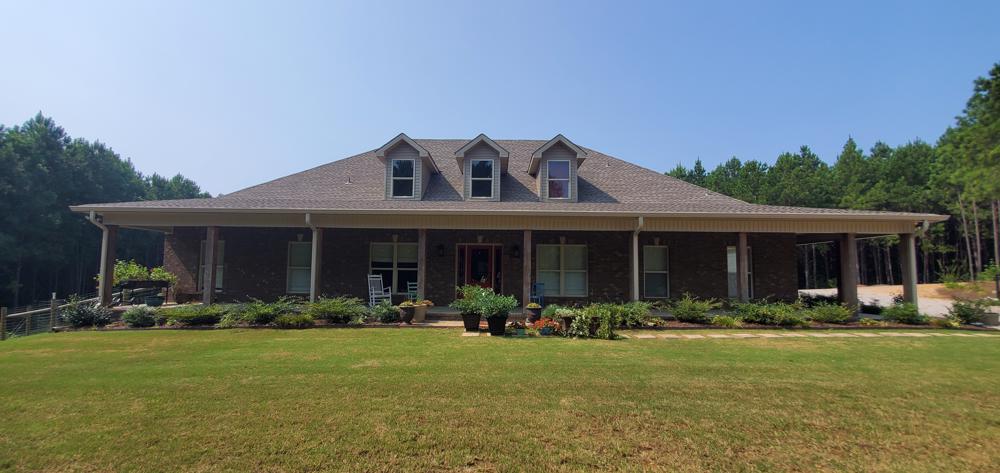Exploring the Differences Between Low-Pressure Soft Washing and Traditional Pressure Washing

Maintaining the exterior of your home or business is essential for curb appeal, longevity, and overall property value. When it comes to cleaning surfaces like sidings, roofs, and decks, two popular methods are often employed: low-pressure soft washing and traditional pressure washing. While both techniques aim to eliminate dirt, grime, and stains, they differ significantly in their approach and applications.
1. Pressure Levels
- Traditional Pressure Washing: Traditional pressure washing, also known as power washing, employs high-pressure streams of water to forcefully remove dirt and contaminants from surfaces. The pressure is measured in pounds per square inch (PSI), and typical pressure washers can range from 1,500 to 4,000 PSI.
- Low-Pressure Soft Washing: In contrast, low-pressure soft washing utilizes water at much lower pressure levels, typically below 500 PSI. The focus here is on using a combination of specialized detergents and a gentler water flow to effectively clean surfaces without the risk of damage associated with high-pressure washing.
2. Suitable Surfaces
- Traditional Pressure Washing: Traditional pressure washing is effective for surfaces that can withstand high-pressure water, such as concrete driveways, sidewalks, and certain types of masonry. It's also suitable for removing tough stains like oil or grease.
- Low-Pressure Soft Washing: Low-pressure soft washing is ideal for more delicate surfaces like vinyl siding, painted wood, stucco, and asphalt shingles. This method is less likely to cause damage to fragile materials and is particularly effective at removing mold, mildew, and algae.
3. Cleaning Agents
- Traditional Pressure Washing: Traditional pressure washing relies mainly on the force of water to clean surfaces. While some cleaning agents can be used, the emphasis is on the power of the water stream to dislodge contaminants.
- Low-Pressure Soft Washing: Low-pressure soft washing incorporates specialized cleaning solutions that are applied to the surface before the water is gently sprayed. These cleaning agents break down and remove contaminants, providing a more thorough and longer-lasting clean.
4. Preventing Damage
- Traditional Pressure Washing: The high pressure used in traditional pressure washing can potentially cause damage to certain surfaces, particularly if not handled properly. It may lead to the erosion of softer materials or force water into cracks and crevices.
- Low-Pressure Soft Washing: One of the main advantages of low-pressure soft washing is its gentle approach, minimizing the risk of damage to surfaces. This makes it a safer option for cleaning more sensitive materials, reducing the likelihood of water intrusion or surface erosion.
5. Environmental Considerations
- Traditional Pressure Washing: Traditional pressure washing can consume a significant amount of water and may require more cleaning agents. This can have environmental implications, especially in regions facing water scarcity.
- Low-Pressure Soft Washing: Low-pressure soft washing tends to use less water and relies on environmentally-friendly cleaning solutions, making it a more sustainable choice for exterior cleaning.
In choosing between low-pressure soft washing and traditional pressure washing, it's crucial to consider the nature of the surfaces you're cleaning and the specific cleaning requirements. While traditional pressure washing is powerful and effective for certain applications, low-pressure soft washing offers a gentler alternative that is better suited for more delicate surfaces. Ultimately, selecting the right method will ensure a thorough clean while preserving the integrity of your property's exterior.
Latest Tips & Articles
-
Exploring the Differences Between Low-Pressure Soft Washing and Traditional Pressure Washing
Maintaining the exterior of your home or business is essential for curb appeal, longevity, and overall property value. When it comes to cleaning surfaces like sidings, roofs, and decks, two popular methods are often employed: low-pressure soft washing and traditional pressure washing. While both techniques aim […]
-
The Advantages of Soft Washing for Central Alabama Homes
Maintaining the exterior of your home in Central Alabama can be challenging, especially with the region's humid climate and frequent bouts of rainfall. Traditional pressure washing methods, while effective in some cases, may not always be the best solution. Soft washing, on the other hand, has […]
